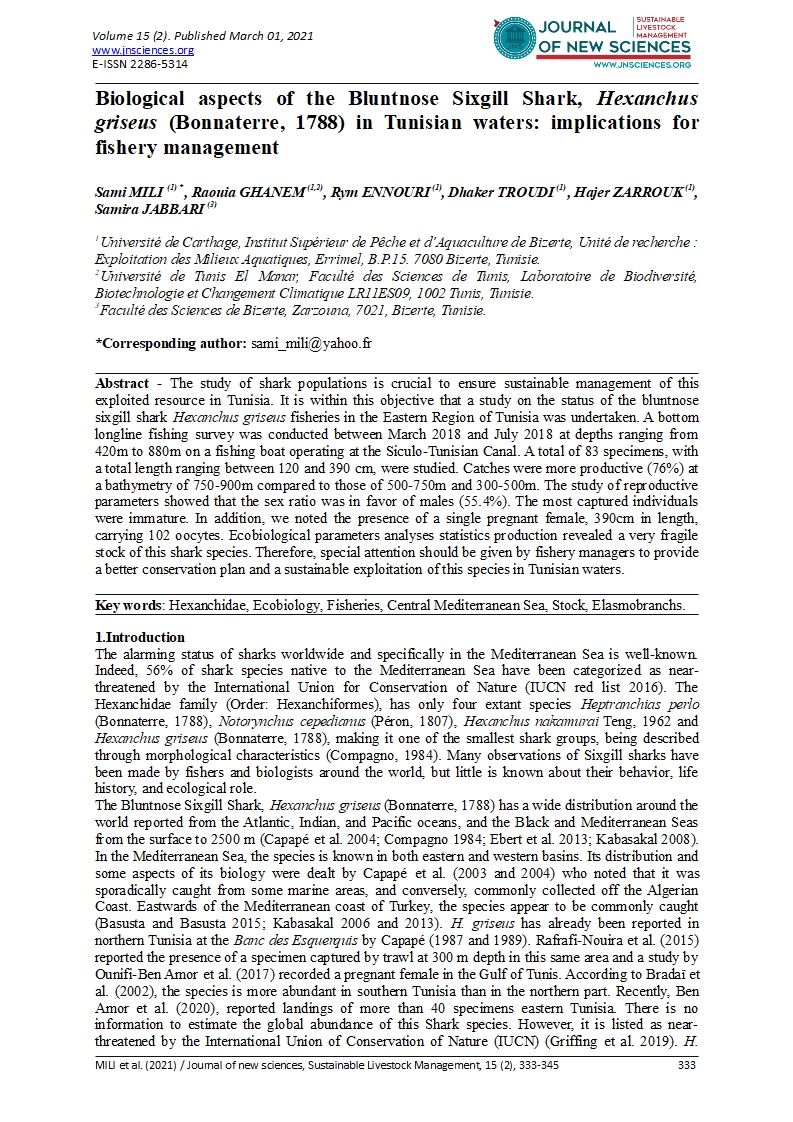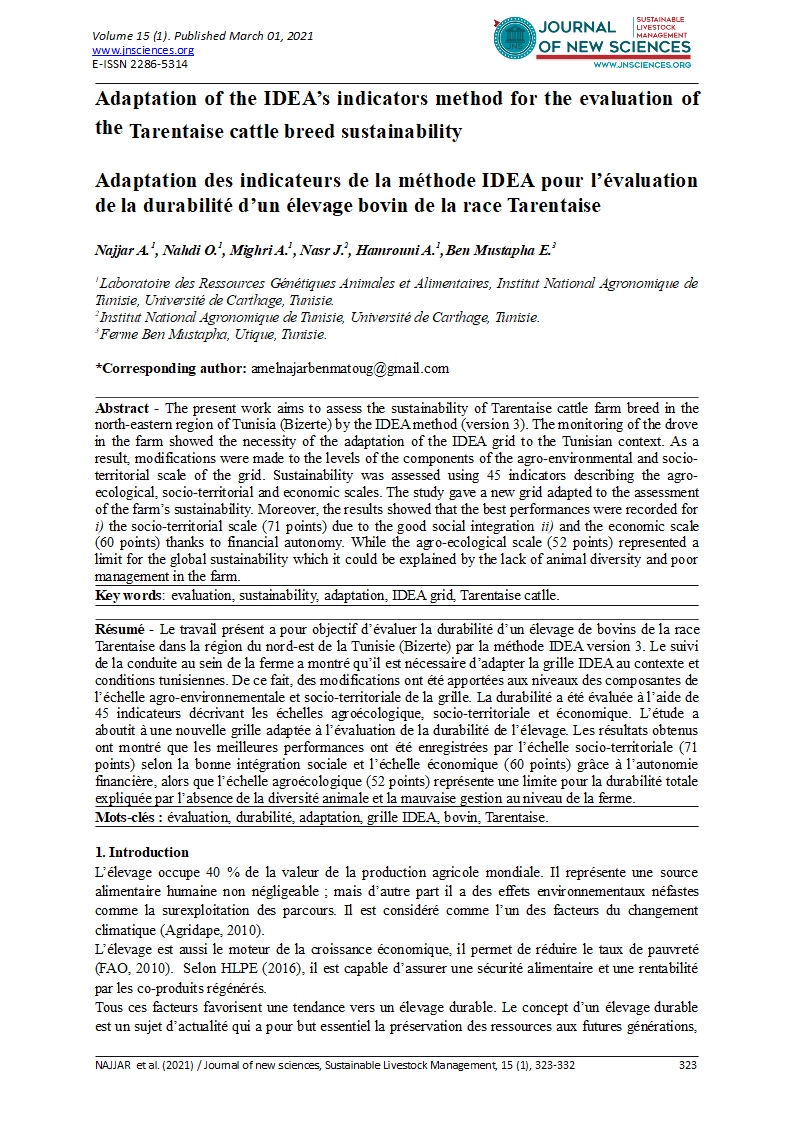- Category: Volume 15
- Hits: 13501
Biological aspects of the Bluntnose Sixgill Shark, Hexanchus griseus (Bonnaterre, 1788) in Tunisian waters: implications for fishery management

Sami MILI (1)
Raouia GHANEM (1,2)
Rym ENNOURI (1)
Dhaker TROUDI (1)
Hajer ZARROUK (1)
Samira JABBARI (3)
1Université de Carthage, Institut Supérieur de Pêche et d’Aquaculture de Bizerte, Unité de recherche : Exploitation des Milieux Aquatiques, Errimel, B.P.15. 7080 Bizerte, Tunisie.
2Université de Tunis El Manar, Faculté des Sciences de Tunis, Laboratoire de Biodiversité, Biotechnologie et Changement Climatique LR11ES09, 1002 Tunis, Tunisie.
3Faculté des Sciences de Bizerte, Zarzouna, 7021, Bizerte, Tunisie.
Abstract - The study of shark populations is crucial to ensure sustainable management of this exploited resource in Tunisia. It is within this objective that a study on the status of the bluntnose sixgill shark Hexanchus griseus fisheries in the Eastern Region of Tunisia was undertaken. A bottom longline fishing survey was conducted between March 2018 and July 2018 at depths ranging from 420m to 880m on a fishing boat operating at the Siculo-Tunisian Canal. A total of 83 specimens, with a total length ranging between 120 and 390 cm, were studied. Catches were more productive (76%) at a bathymetry of 750-900m compared to those of 500-750m and 300-500m. The study of reproductive parameters showed that the sex ratio was in favor of males (55.4%). The most captured individuals were immature. In addition, we noted the presence of a single pregnant female, 390cm in length, carrying 102 oocytes. Ecobiological parameters analyses statistics production revealed a very fragile stock of this shark species. Therefore, special attention should be given by fishery managers to provide a better conservation plan and a sustainable exploitation of this species in Tunisian waters.
Key words: Hexanchidae, Ecobiology, Fisheries, Central Mediterranean Sea, Stock, Elasmobranchs.

